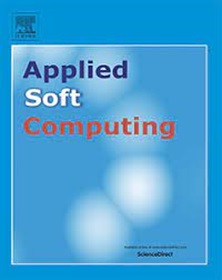A deep-based Gaussian mixture model algorithm for large-scale many objective optimization
IF 7.2
1区 计算机科学
Q1 COMPUTER SCIENCE, ARTIFICIAL INTELLIGENCE
引用次数: 0
Abstract
As the number of decision variables increases, the curse of dimensionality becomes a significant challenge in many practical multi-objective optimization problems. This issue is further exacerbated in large-scale many-objective optimization problems (MaOPs), where the growing number of optimization objectives makes it increasingly difficult for evolutionary algorithms to find optimal solutions. In this study, we propose a deep Gaussian mixture model algorithm tailored for large-scale MaOPs. The novelty of this approach lies in its hierarchical detection of interactions and redundancies among decision variables, enabling a more effective grouping of variables. Specifically, a Gaussian mixture model-based framework is used to model the problem, allowing for the preliminary grouping of decision variables. The proposed Grouping Decision Variables using the Gaussian Mixture Model (GDVG) algorithm categorizes variables into two types: convergence-related and diversity-related variables. Additionally, a Linkage Identification Measurement with Chaos (LIMC) method is introduced for grouping convergence-related variables based on their interactions. For diversity-related variables, we present a Trivial Variable Detection Scheme (TVDS) to identify and group variables that contribute to diversity. The experimental results demonstrate that the proposed method outperforms other competitive algorithms on most benchmark test cases, particularly showcasing its effectiveness in large-scale MaOPs.
求助全文
约1分钟内获得全文
求助全文
来源期刊

Applied Soft Computing
工程技术-计算机:跨学科应用
CiteScore
15.80
自引率
6.90%
发文量
874
审稿时长
10.9 months
期刊介绍:
Applied Soft Computing is an international journal promoting an integrated view of soft computing to solve real life problems.The focus is to publish the highest quality research in application and convergence of the areas of Fuzzy Logic, Neural Networks, Evolutionary Computing, Rough Sets and other similar techniques to address real world complexities.
Applied Soft Computing is a rolling publication: articles are published as soon as the editor-in-chief has accepted them. Therefore, the web site will continuously be updated with new articles and the publication time will be short.
 求助内容:
求助内容: 应助结果提醒方式:
应助结果提醒方式:


